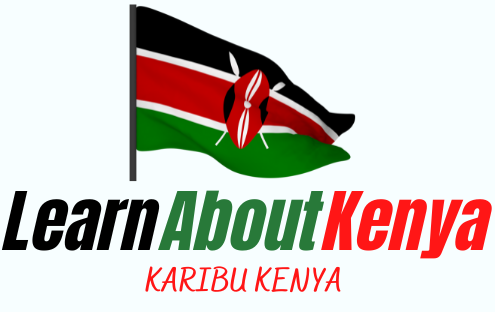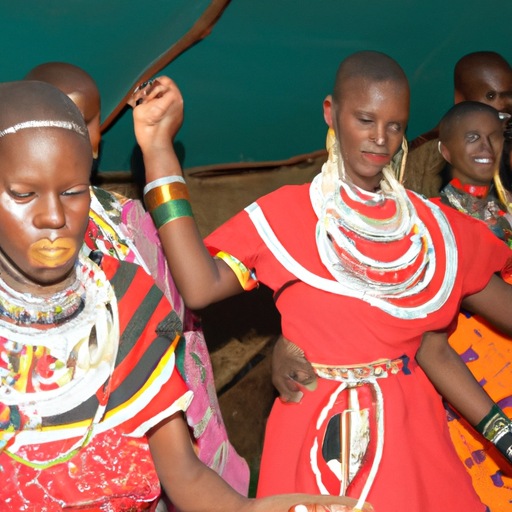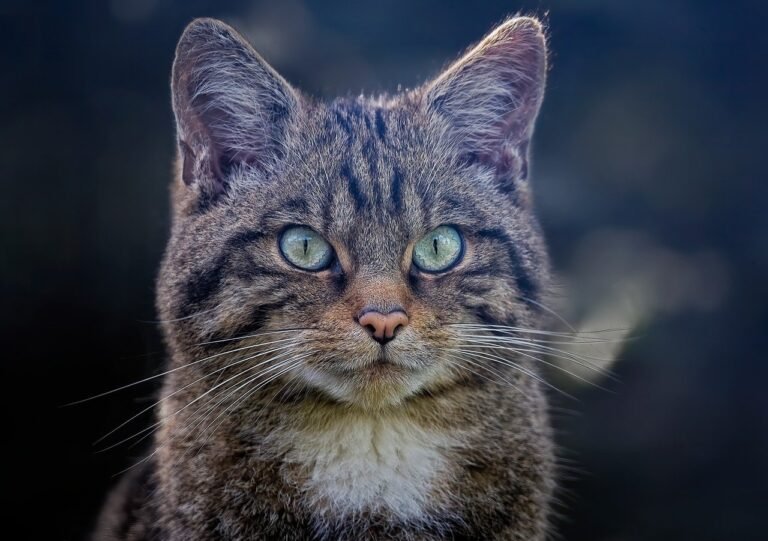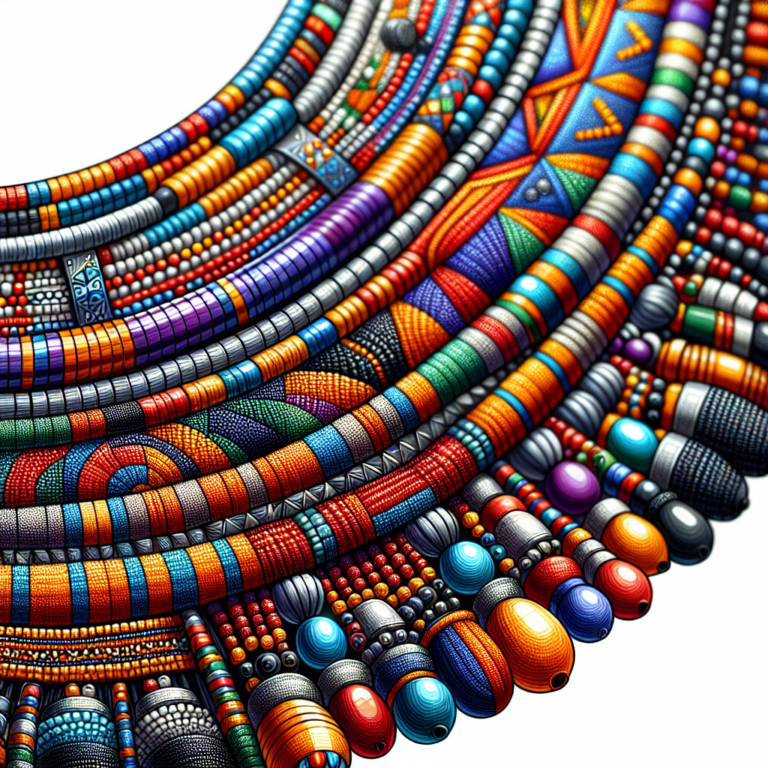How Do Kenyans Typically Greet Each Other?
Imagine strolling through the vibrant streets of Kenya, where the air is filled with warmth and the sound of laughter. Everywhere you turn, you witness a fascinating cultural tradition – the art of greeting. Kenyans have a unique way of embracing one another, intertwining respect, warmth, and friendliness in each interaction. From the moment you step foot in this incredible country, you’ll be swept away by the genuine smiles and heartfelt greetings that make Kenyans renowned for their hospitality. So, let’s embark on a journey to uncover the captivating ways Kenyans typically greet each other.
Traditional Greetings
In Kenya, traditional greetings are an important aspect of daily interactions and reflect the rich cultural diversity of the country. Different regions and tribes have their own unique greetings, but there are some common traditional greetings that are widely used across Kenya.
Handshakes
Handshakes are the most common form of greeting in Kenya and are widely practiced among people of all ages and backgrounds. A handshake is a simple yet meaningful gesture that signifies respect, friendship, and warmth. When greeting someone, it is customary to extend your right hand for a handshake while maintaining eye contact. It is important to note that handshakes in Kenya are generally not firm or firm, but rather gentle and friendly.
Hugs
Hugs are also becoming more common in Kenyan culture, especially among friends and family. A hug is a warm and intimate greeting that expresses affection and closeness. It is typically accompanied by a gentle pat on the back and a genuine smile. Hugs are more commonly practiced among younger generations and in urban areas, where Western influences have contributed to the adoption of this form of greeting.
Bow
Bowing as a form of greeting is not as common in Kenya as it is in some other cultures. However, it may still be seen in certain traditional or formal settings, such as when meeting elders or during ceremonies. When bowing, it is customary to lower your upper body slightly, keeping your gaze down as a sign of respect. The depth of the bow varies depending on the level of formality and the relationship between the individuals.
Forehead Touching
Forehead touching, also known as “Meta” or “Kumbatio,” is a traditional greeting practiced by some tribes in Kenya, such as the Maasai and Samburu. This unique form of greeting involves touching foreheads and can be seen as a gesture of respect, friendship, and trust. It is often accompanied by the exchange of pleasantries and inquiries about each other’s well-being.
Common Greetings in Swahili
Swahili is one of the official languages of Kenya and is widely spoken throughout the country. Learning a few common Swahili greetings can go a long way in making connections and showing respect to the local culture.
Habari yako?
“Habari yako?” is a common way to greet someone in Swahili, which translates to “How are you?” This greeting allows you to start a conversation and show genuine interest in the well-being of the person you are speaking to. The reply to this greeting is usually “Nzuri” (good), “Salama” (safe), or “Poa” (cool).
Hujambo?
“Hujambo?” is another common Swahili greeting that can be used to ask “How are you?” This greeting is more formal and is typically used when addressing someone older or in a more professional setting. The appropriate response to this greeting is “Sijambo” (I am fine).
Sasa?
“Sasa?” is a casual greeting that can be used among friends or peers to ask “What’s up?” or “What’s going on?” This greeting is often accompanied by a friendly smile and can be a way to initiate a conversation in a more relaxed and informal setting.
Karibu!
“Karibu!” is a Swahili word that means “Welcome!” This greeting is used to express hospitality and to make someone feel welcome, regardless of their background or status. It is commonly used when welcoming guests into your home or when someone arrives at a social gathering or event.
Greetings Among Friends and Family
In Kenya, greetings among friends and family are imbued with warmth, familiarity, and a sense of connectedness. These greetings go beyond a simple exchange of words and often involve physical gestures and expressions of care.
Calling by First Name
Among friends and family, it is common to address each other by first names. Using someone’s first name in a greeting shows familiarity and a close relationship. However, it is important to note that in more formal or respectful settings, it is appropriate to use honorific titles or last names.
Hugs and/or Handshakes
When greeting friends and family, hugs and handshakes are both common gestures of affection and connection. Hugs are often accompanied by a verbal greeting and a warm smile, while handshakes may be more common among older generations or in formal scenarios.
Asking About Well-being
A key aspect of greetings among friends and family is the genuine inquiry about each other’s well-being. It is customary to ask how the other person is doing and to show a genuine interest in their life. This demonstrates care and consideration for the other person’s feelings, creating a sense of connection and support.
Small Talk
Engaging in small talk is also a common part of greetings among friends and family. This can involve discussions about everyday life, current events, or personal topics. Small talk helps to establish rapport, demonstrate interest in each other’s lives, and create a comfortable and friendly atmosphere.
Formal Greetings
Formal greetings in Kenya adhere to certain social conventions and are practiced in professional, formal, or official settings. These greetings emphasize respect, professionalism, and adherence to cultural norms.
Using Honorific Titles
When greeting someone in a formal setting, it is important to address them using appropriate honorific titles, such as “Mr.,” “Mrs.,” or “Dr.” This shows respect and acknowledgment of the other person’s status or position. If you are unsure of someone’s title, it is best to err on the side of formality until you are corrected.
Handshakes with Right Hand
In formal greetings, a handshake with the right hand is the most common form of physical greeting. It is important to offer a firm handshake while maintaining eye contact. Handshakes in formal settings are usually not accompanied by hugs or other physical gestures.
Maintaining Eye Contact
Maintaining eye contact during a formal greeting is considered a sign of respect and attentiveness. It shows that you are fully present in the interaction and gives the other person a sense of being valued and acknowledged.
Following Formal Etiquette
Formal greetings also involve following specific etiquette guidelines. This includes waiting for the other person to initiate the greeting, standing up if you are seated when the person arrives, and using polite and formal language. It is important to be mindful of cultural norms and customs, such as removing your shoes when entering someone’s home or addressing elders with utmost respect.
Greetings in Work Environment
In a work environment in Kenya, greetings play a crucial role in establishing professionalism, building relationships, and creating a harmonious and supportive atmosphere.
Handshakes to Establish Professionalism
In a professional setting, handshakes are the most common form of greeting. They help establish a professional tone and demonstrate respect for colleagues, clients, or business partners. Handshakes in the work environment are usually firm and accompanied by a professional smile.
Using Appropriate Titles
When addressing colleagues or superiors in the workplace, it is customary to use appropriate titles, such as “Mr.,” “Ms.,” “Dr.,” or professional titles. This demonstrates professionalism and respect for hierarchy and authority within the organization.
Taking Time to Inquire about Family
In Kenyan culture, it is not uncommon to inquire about someone’s family as part of a greeting, especially in a work environment where colleagues may have developed personal relationships. Taking a genuine interest in the well-being of colleagues’ families shows a caring attitude and fosters strong professional relationships.
Exchanging Business Cards
In formal work environments, exchanging business cards is often seen as a professional courtesy. This practice allows individuals to exchange contact information and maintain connections beyond the initial greeting. When receiving a business card, take the time to read it and acknowledge the information before carefully storing it.
Greetings in Rural Areas
Rural areas in Kenya often have their own unique greetings and customs, reflecting the cultural diversity of the different tribes and communities. These greetings may vary significantly from the more urbanized areas of the country.
Traditional Greetings
Traditional greetings in rural areas of Kenya often revolve around cultural practices and customs specific to each community. These can include rituals, dances, or chants as forms of greeting, which hold deep cultural significance and are passed down through generations.
Respectful Gestures
Respectful gestures, such as bowing or kneeling, may be more commonly seen in rural areas when greeting elders or individuals of higher social or cultural standing. These gestures show reverence and respect for the wisdom and experience of the older generation.
Salutations in Local Dialects
In rural areas, greetings in local dialects are often predominant. Each tribe or community may have their own unique greetings, verbally or through hand gestures, that are specific to their culture and language. Learning a few greetings in the local dialect can help foster connections and demonstrate respect for the local customs and traditions.
Community Oriented Greetings
Greetings in rural areas often have a strong community-oriented focus. This means that greetings extend beyond individuals and may involve the entire community or group. Welcoming newcomers, showing hospitality, and ensuring a sense of belonging are key aspects of greetings in rural areas.
Greetings in Urban Areas
Urban areas in Kenya, particularly cities and towns, have a blend of traditional and modern greetings influenced by globalization and Western culture. These greetings may differ to some extent from the greetings in rural areas.
Handshakes with Both Hands
In urban areas, it is increasingly common to greet someone with a handshake using both hands. This gesture signifies a warm and enthusiastic greeting, showing genuine interest and establishing a strong connection. Handshakes with both hands are often accompanied by a smile and sometimes a slight nod.
Informal Greetings
Informal greetings, such as “Jambo” or “Sasa,” are more prevalent in urban areas and are often used among friends, peers, or acquaintances. These greetings are casual, friendly, and convey a sense of familiarity and openness.
Acknowledging with Nods
In urban areas, where the pace of life is often faster, it is common to acknowledge others with a nod of the head. This is a quick and subtle greeting that shows recognition and respect, without the need for a formal handshake or verbal exchange.
Maintaining Distance
In crowded urban areas, maintaining a distance during greetings is common. This is due to the high population density and the need to respect personal space. Greetings in urban areas are often brief and efficient, without extensive physical contact or prolonged conversations.
Greetings Among Strangers
When greeting strangers in Kenya, it is customary to be polite, friendly, and respectful. Greetings among strangers are often more reserved compared to greetings among friends or family.
Handshakes
Handshakes are the most common form of greeting among strangers in Kenya. It is important to offer a firm yet friendly handshake, maintaining eye contact and a genuine smile. This establishes a positive first impression and shows respect for the other person.
Polite Gestures
In addition to handshakes, polite gestures such as a nod, a wave, or a slight bow can also be used to greet strangers in Kenya. These gestures convey politeness and acknowledge the presence of the other person without intruding on personal space.
Acknowledging with a Smile
A smile is a universal form of greeting and is often used to acknowledge strangers in Kenya. It is a friendly and non-intrusive way to show kindness and create a positive atmosphere. A smile can instantly break down barriers and make the interaction more pleasant for both parties.
Avoiding Physical Contact
When greeting strangers, it is important to be mindful of personal boundaries and avoid excessive physical contact. While handshakes are generally acceptable, other forms of physical contact such as hugs or forehead touching may be considered inappropriate when greeting strangers.
Greetings in Social Gatherings
Social gatherings in Kenya provide an opportunity for people to come together, celebrate, and form new connections. Greetings in social gatherings are often warm, enthusiastic, and designed to create a festive atmosphere.
Welcoming with Handshakes
In social gatherings, it is common to welcome guests with handshakes. This form of greeting shows appreciation for their presence and helps establish a friendly and inclusive environment. Handshakes in social gatherings are often accompanied by a smile, a verbal greeting, and sometimes a short conversation.
Kissing on Cheek
In some social gatherings, particularly among close friends and family, a gentle kiss on the cheek may be used as a form of greeting. This practice has been influenced by Western culture and is more commonly seen in urban areas. It is important to gauge the comfort level of the other person before initiating this form of greeting.
Expressing Excitement
Greetings in social gatherings often involve expressing excitement and joy. This can be done through enthusiastic verbal greetings, hugs, or animated gestures. The goal is to create a festive and celebratory atmosphere where everyone feels welcomed and included.
Offering Drinks or Food
In Kenyan culture, offering drinks or food to guests is a common form of greeting and hospitality. This gesture demonstrates generosity and a desire to make guests feel comfortable and well taken care of. It is polite to accept such offerings and to show appreciation for the host’s kindness.
Greetings in Formal Events
Formal events in Kenya, such as conferences, ceremonies, or official functions, require a higher level of decorum and adherence to formalities. Greetings in formal events reflect the seriousness and professionalism of the occasion.
Using Formal Language
In formal events, it is important to use formal language and to address individuals by their appropriate titles or honorifics. This shows respect and sets the tone for a formal and dignified interaction. It is advisable to use polite and courteous language in all conversations and greetings.
Greeting with a Bow
In some formal events, particularly those influenced by traditional customs or cultural practices, a bow may be used as a form of greeting. The depth of the bow varies depending on the level of formality and the cultural context. Bowing shows deference and respect to individuals of higher status or authority.
Dressing in Formal Attire
In formal events, it is important to dress appropriately in formal attire. This shows respect for the occasion and the individuals present. Dressing in formal attire conveys professionalism and helps create a sense of unity and cohesion among the participants.
Extending Invitations
Greetings in formal events often involve extending invitations or acknowledging the presence of guests of honor. This can be done through a formal speech, a toast, or a ceremonial welcome, where individuals are officially recognized and their contributions or achievements are acknowledged.
In conclusion, greetings in Kenya reflect the diverse cultural heritage of the country and vary based on the setting, relationship between individuals, and the level of formality. Whether it’s a traditional greeting, a formal greeting in a professional setting, or a warm greeting among friends and family, Kenyans value respect, warmth, and a genuine expression of interest in each other’s well-being. By understanding and respecting these greetings, you can foster connections, show respect for local customs, and create meaningful interactions with the people of Kenya.





